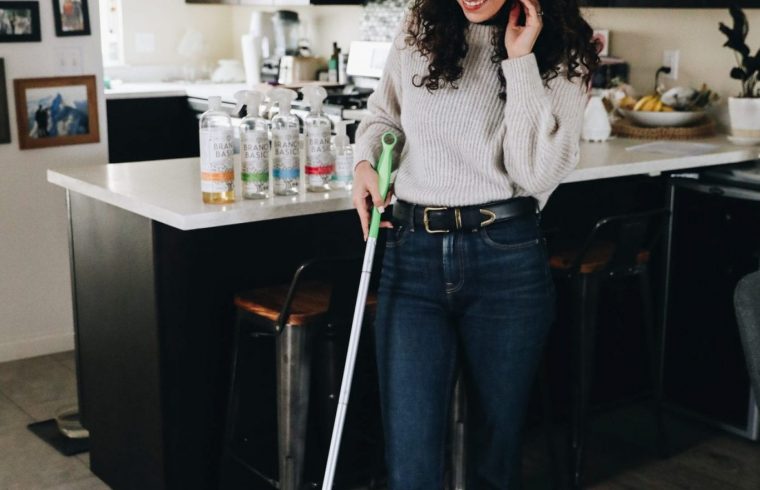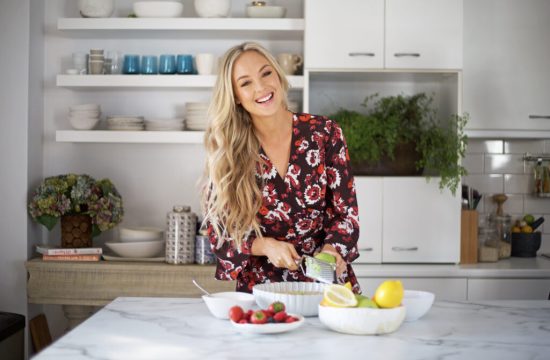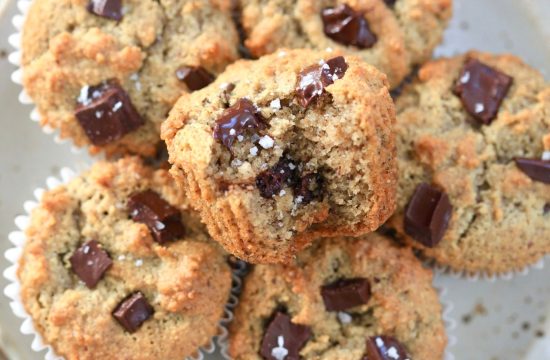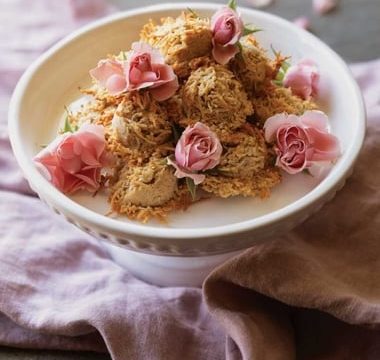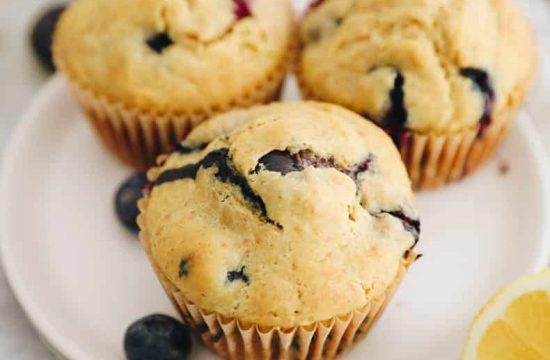Looking to make the switch to natural cleaning products for your home? Look no further than this list of the best non-toxic cleaning products and what to look for and what to avoid in your cleaning products.
Here’s a confession no one will be surprised by: I am a total neat freak. Actually, I should say clean freak because I’m far more likely to spend an hour scrubbing the floors than folding my clothes or organizing my closet. It’s no secret I love things clean…a habit I 100% attribute to my Mom who is meticulous with her cleaning (she’s famous for her baking soda tricks!).
Now let me be clear: there is not such thing as a spotless home. I do my very best to keep things tidy but I’m human and life happens so having a perfectly clean home is never going to be my number one priority nor does it need to be.
BUT I do feel genuinely happy and more at ease in a clean home so it’s something I make a point of keeping up with. And given how passionate I am about natural beauty, it’s only natural I also choose to use natural cleaning products for my home. So I thought I would spend this post breaking down why I use natural cleaning products, my cleaning schedule and the best natural cleaning products I’ve found on the market.

Why clean your home with natural cleaning products?
If you want to take a peek at the products you’re currently using to clean your home, head to the Environmental Working Group website and search for those products! They will rank each product with a grade of A-F where F=failing. The EWG takes into account the effects the harsh chemicals have on our respiratory system, skin irritation, developmental and reproductive toxicity, cancer concerns and environmental impact. It’s pretty startling to look at popular cleaning products.
Not only are non-toxic cleaning products better for your health, they’re also better for the environment. Flushing toxic chemicals down the drain pollutes our waterways and many conventional cleaning products are made with ingredients that are toxic, hazardous, non-biodegradable, as well as from non-renewable resources like petroleum that adversely affect our ecosystems.
The main things to look out for are the following:
1. Phthalates: Often found in many household products with a fragrance, such as air fresheners, dish soap, even toilet paper. Because of proprietary laws, companies don’t have to disclose what is in their scents, so you won’t find phthalates on a label. If you see the word “fragrance” on a label, there’s a good chance phthalates are present. THIS IS A BIG ONE – especially for women with hormonal imbalances or any reproductive issues.
2. Perchloroethylene (PERC): Found in dry-cleaning solutions, spot removers, and carpet and upholstery.
3. 2-Butoxyethanol: Frequently found in window, kitchen and multipurpose cleaners.
4. Triclosan: Found mostly in liquid dishwashing detergents and hand soaps labeled “antibacterial.”
5. Quarternary Ammonium Compounds (QUATS): Fabric softener liquids and sheets, most household cleaners labeled “antibacterial.”
6. Ammonia: Find them in polishing agents for bathroom fixtures, sinks and jewelry; also in glass cleaner.
7. Chlorine: You’ll find this in toilet bowl cleaners, mildew removers, laundry whiteners, household tap water.
Do natural products actually clean?!
YES!! Yes, yes, yes. I understand why people think you need the worst smelling, most intense cleaning products to thoroughly clean your home but the truth is, the non-toxic counterparts are just as effective if not more.
Some traditional cleaning products can leave behind a residue that can build up over time and actually can collect more dust and dirt. Many are also intensely anti-bacterial and there are long-term side-effects to constantly wiping out the microbiome of your home. We need a healthy amount of bacteria to prevent illness so it’s time to ditch the bleach.

How to Transition to Natural Cleaning Products
Even though you might look up your cleaning products and want to toss everything instantly and switch, my advice is the same as transitioning to green beauty – you don’t have to do it all at once. As you run out of a certain cleaning product, swap to a non-toxic option.
One of the best solutions I found for making the switch is Branch Basics. I was actually sent their cleaning kit a year and a half ago and had such a hard time believing that it could actually be effective that I left it collecting dust. I’ve since broken out the entire kit and given all the products a try. I like 100% of them and what makes them especially great is that you can reuse the bottles! All you’ll need to do is repurchase the cleaning concentrate and refill the spray bottles with the appropriate ratio of concentrate to water.
FYI: this post is NOT sponsored by them. I’ve since become an affiliate for them because of how impressed I am with many of their products, but as you’ll see below I also use a lot of other brands. Just wanted to mention them as they are a great starter kit for anyone wanting to switch to natural cleaning products.

Let’s Get Cleaning!
Branch Basics Products
I did want to highlight the products I use from branch basics first because there are several of them. As I mentioned above, Branch Basics has a starter kit for $69 which includes their all-purpose cleaning spray, bathroom spray, streak-free spray and hand soap bottles and cleaning concentrate. You simply fill the bottles to the appropriate line with water and top with the cleaning concentrate.
When you finish a bottle you just refill it with water and the concentrate. It helps to reduce waste by reusing the bottles and saves you money by only needing to repurchase the concentrate. Here are the products I love:
- All-Purpose Cleaning Spray
- All-Purpose Bathroom Spray
- Streak-Free Window + Mirror Cleaner
- Hand Soap
- Laundry detergent*
*I used to not use their laundry detergent but since adding the Oxygen Boost, I’ve been so impressed with how well it cleans our clothes! It’s a bit of an adjustment getting used to the consistency of the laundry detergent (it’s pretty liquidy) but after testing it with some very dirty dishtowels I can say with certainty that the formula removes stains and cleans! I also use wool dryer balls in place of fabric softener.

As for all the other products we use for non-toxic cleaning, I’ve listed them below. Keep in mind, these are not all perfect. Switching to natural cleaning products is a process for me and until some of the cleaner ones become more effective I’m sticking with this middle ground. When possible we order big refill bottles and reuse the original ones.
Laundry Detergent: Branch Basics Laundry Detergent + Oxygen Boost (I also use wool dryer balls in place of fabric softener.)
Dishwasher Detergent: Ecover Zero Dishwashing Tablets
Dish Soap: Seventh Generation Free & Clear Fragrance-Free Dish Soap
Toilet Bowl Cleaner: Seventh Generation Toilet Bowl Cleaner
Floor Cleaner: Aunt Fannie’s Floor Cleaner Wash (with this reusable floor wipe)*
*We were able to reuse our old swiffer mop by putting velcro on the top and sides of the reusable wipe as shown below on our floors and tiles.

DIY All-Purpose Cleaner
I did want to add that it is very easy to make your own DIY All-Purpose Cleaner at home. The reason I don’t use it is because I am particular and REALLY don’t like the smell of vinegar. Yes, you can use essential oils to mask it but my nose knows everything. However if you are on a budget this is a great option for you and can easily be refilled reducing your waste.
First thing you need to know is that vinegar should be diluted with water in a 1:4 ratio. So for 1/2 cup of white vinegar you will use 2 cups of water. The skies the limit when it comes to essential oils but the most effective for cleaning are lemon, peppermint and lavender.
Here’s a recipe for DIY All-Purpose Cleaner:
1/2 cup of white vinegar*
2 cups of water
2-3 drops of lavender essential oil
2-3 drops of peppermint essential oil
1-2 drops of tea tree oil
Combine everything in a glass spray jar and shake. Spray on counter and wipe clean with a dish cloth.
*Note: if you are very sensitive to the smell of vinegar, I recommend infusing it with citrus peels and/or herbs for a week or two before straining to remove materials. Use infused vinegar in place of white vinegar above.
Like this post? Here are some others you might enjoy:
JOIN THE THM NEWSLETTER
Join 20,000+ members of the THM Community to get access to exclusive recipes, healthy lifestyle tips and behind-the-scenes news from our team!
Success! Now check your email to confirm your subscription.

